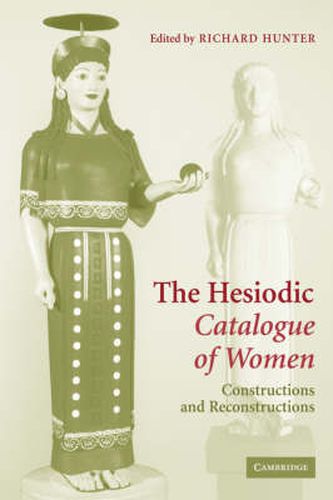Readings Newsletter
Become a Readings Member to make your shopping experience even easier.
Sign in or sign up for free!
You’re not far away from qualifying for FREE standard shipping within Australia
You’ve qualified for FREE standard shipping within Australia
The cart is loading…






The Catalogue of Women, ascribed to Hesiod, one of the greatest figures of early hexameter poetry, maps the Greek world, its evolution, and its heroic myths through the mortal women who bore children to the gods. In this collection a team of international scholars offers the first attempt to explore the poem’s meaning, significance and reception. Individual chapters examine the organisation and structure of the poem, its social and political context, its relation to other early epic and Hesiodic poetry, its place in the development of a pan-Hellenic consciousness, and attitudes to women. The wider influence of the Catalogue is considered in chapters on Pindar and the lyric tradition, on Hellenistic poetry, and on the poem’s reception at Rome. This collection provides a significant new approach to the study of the Catalogue.
$9.00 standard shipping within Australia
FREE standard shipping within Australia for orders over $100.00
Express & International shipping calculated at checkout
The Catalogue of Women, ascribed to Hesiod, one of the greatest figures of early hexameter poetry, maps the Greek world, its evolution, and its heroic myths through the mortal women who bore children to the gods. In this collection a team of international scholars offers the first attempt to explore the poem’s meaning, significance and reception. Individual chapters examine the organisation and structure of the poem, its social and political context, its relation to other early epic and Hesiodic poetry, its place in the development of a pan-Hellenic consciousness, and attitudes to women. The wider influence of the Catalogue is considered in chapters on Pindar and the lyric tradition, on Hellenistic poetry, and on the poem’s reception at Rome. This collection provides a significant new approach to the study of the Catalogue.